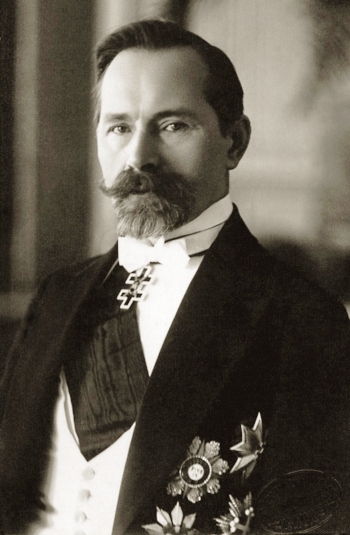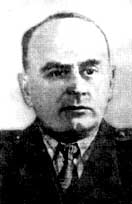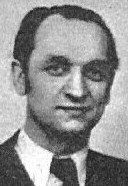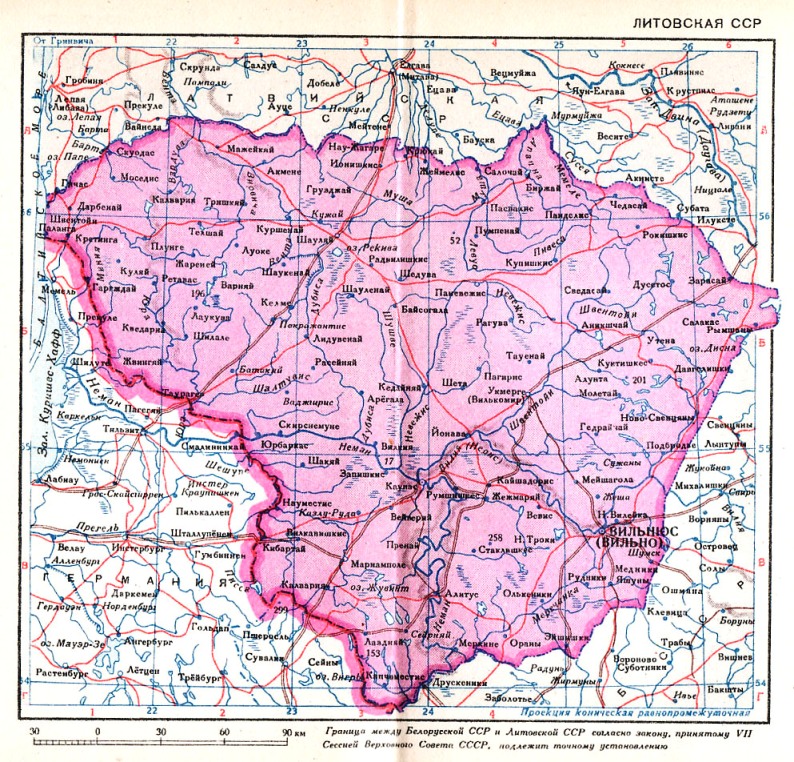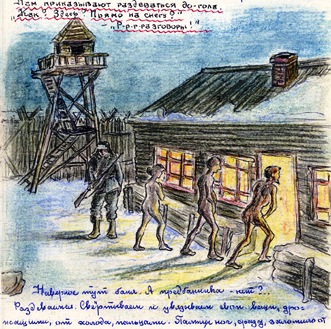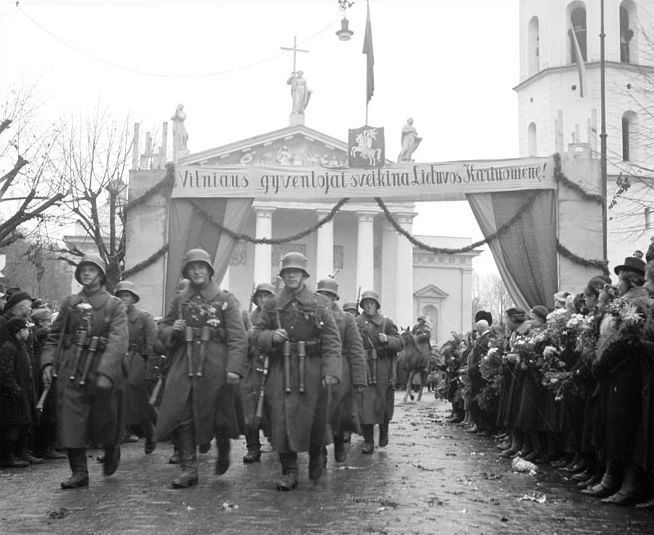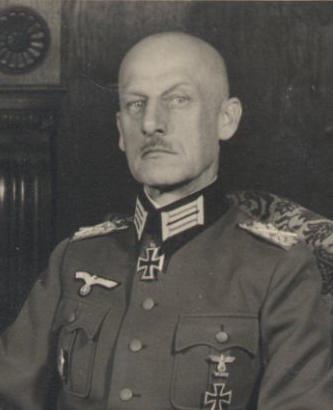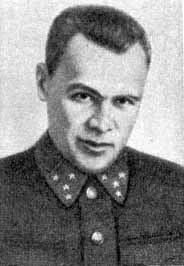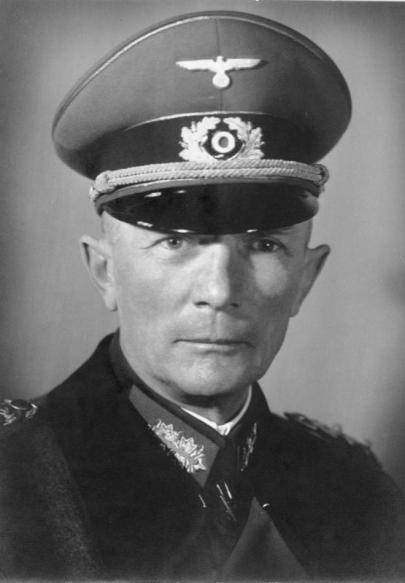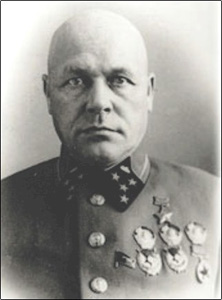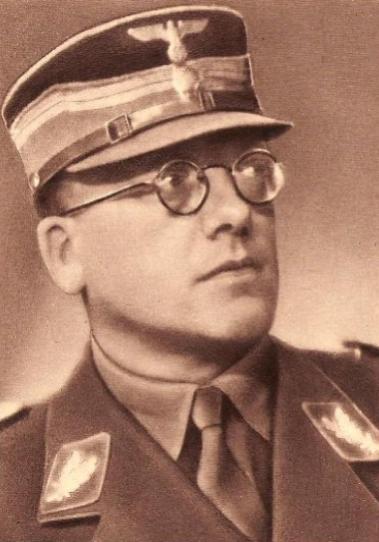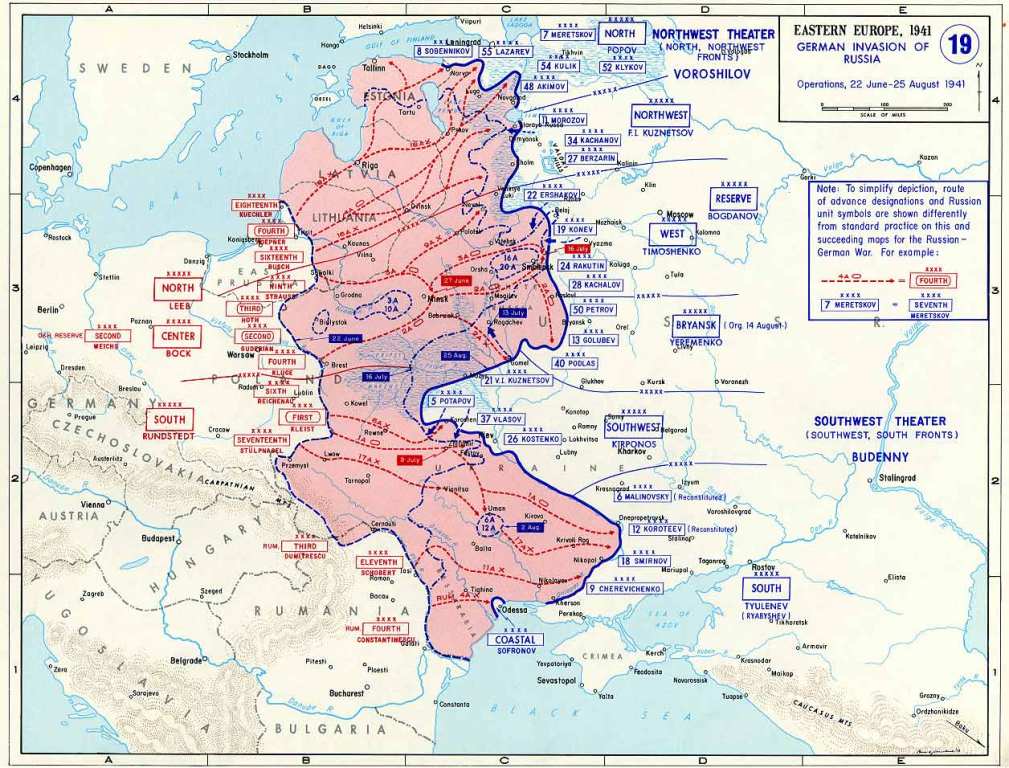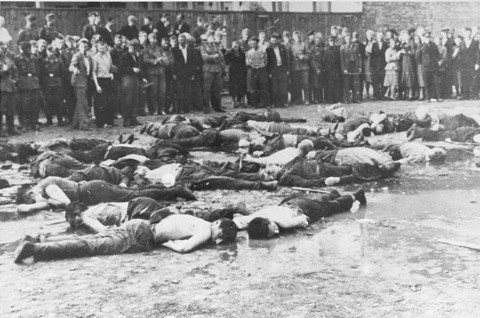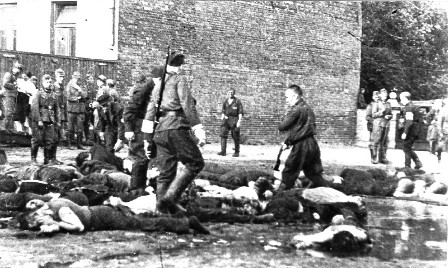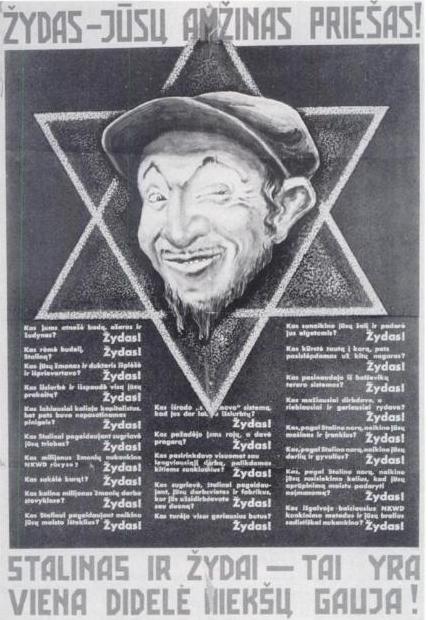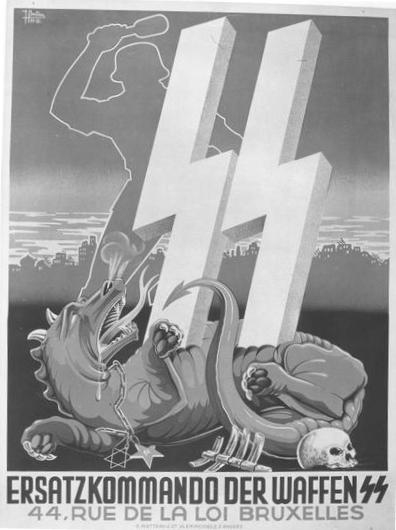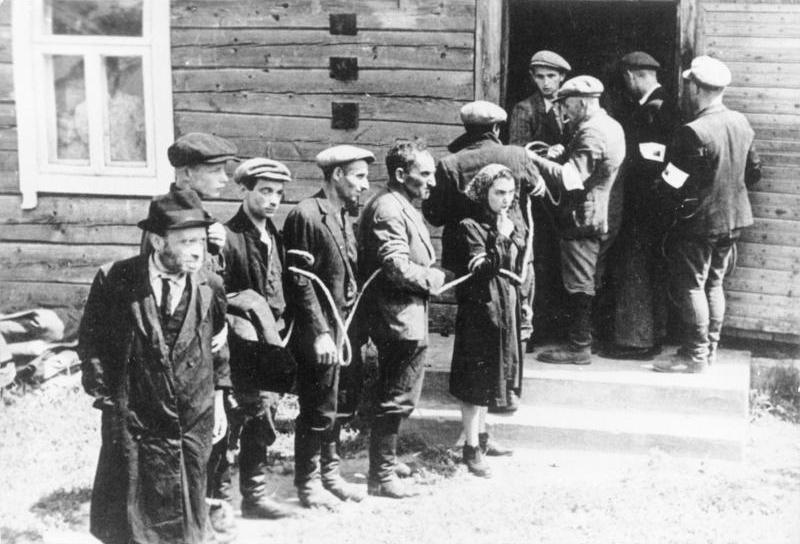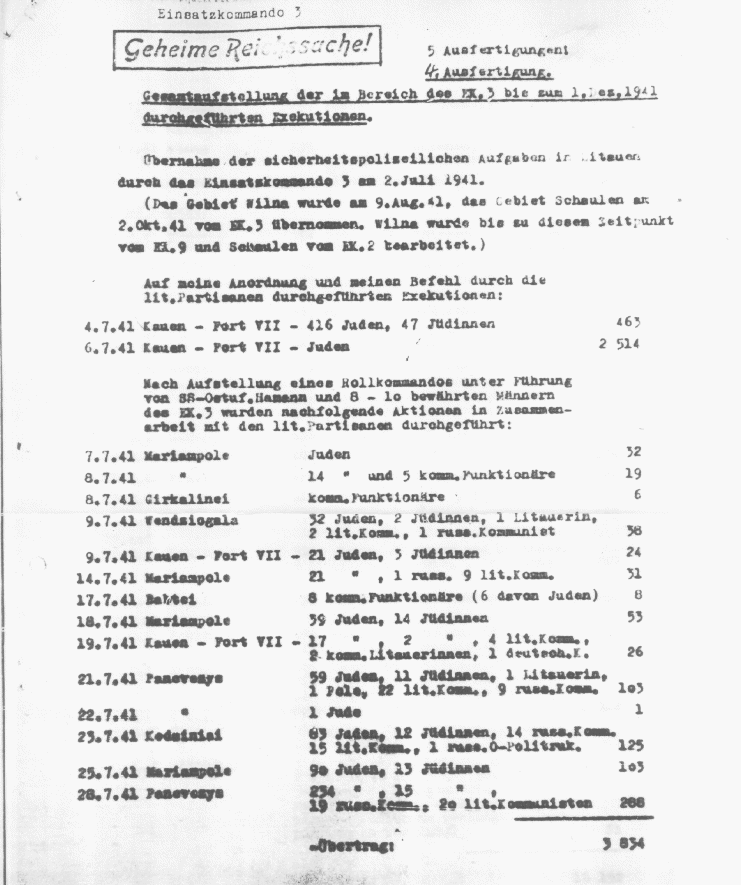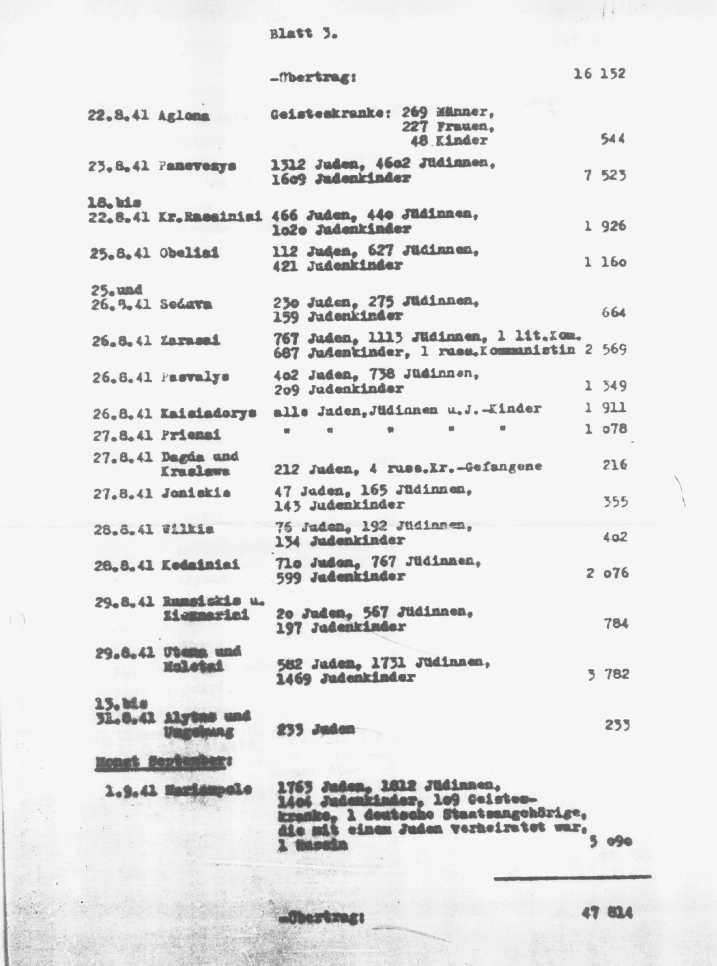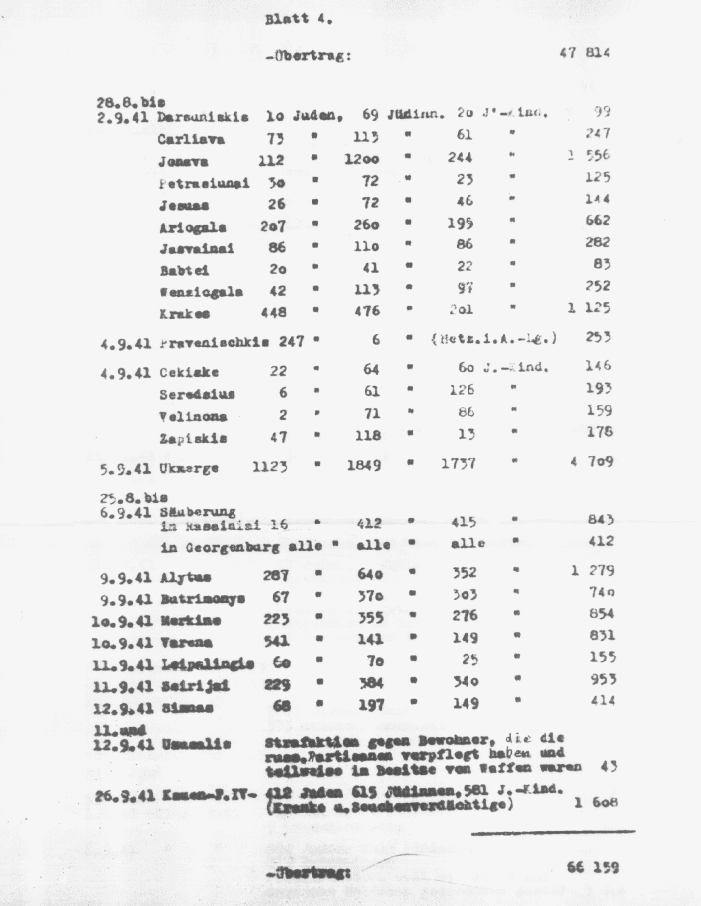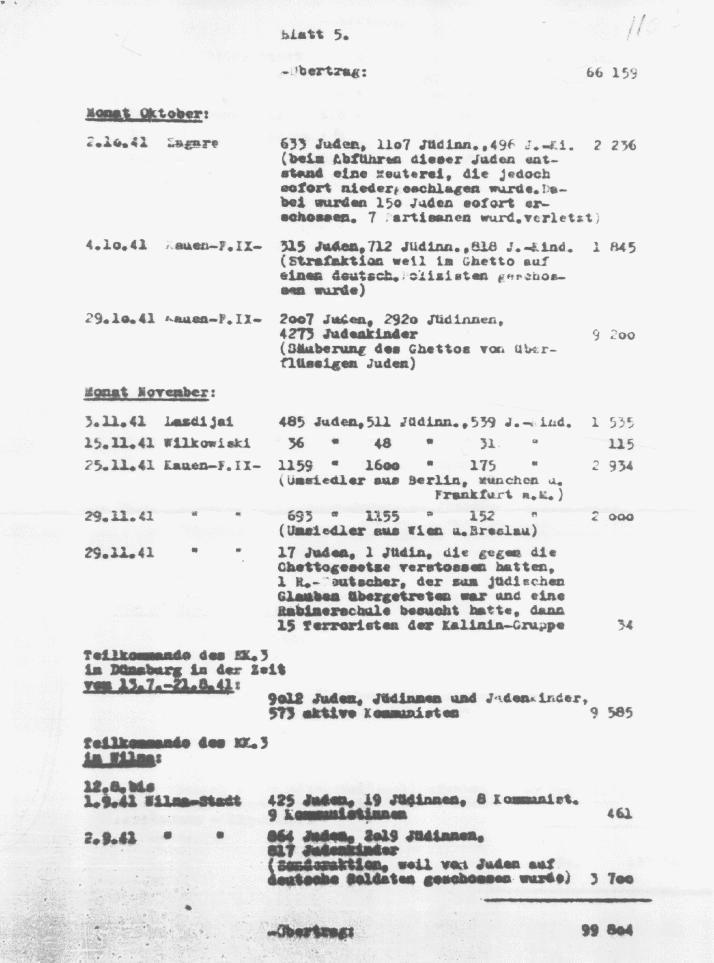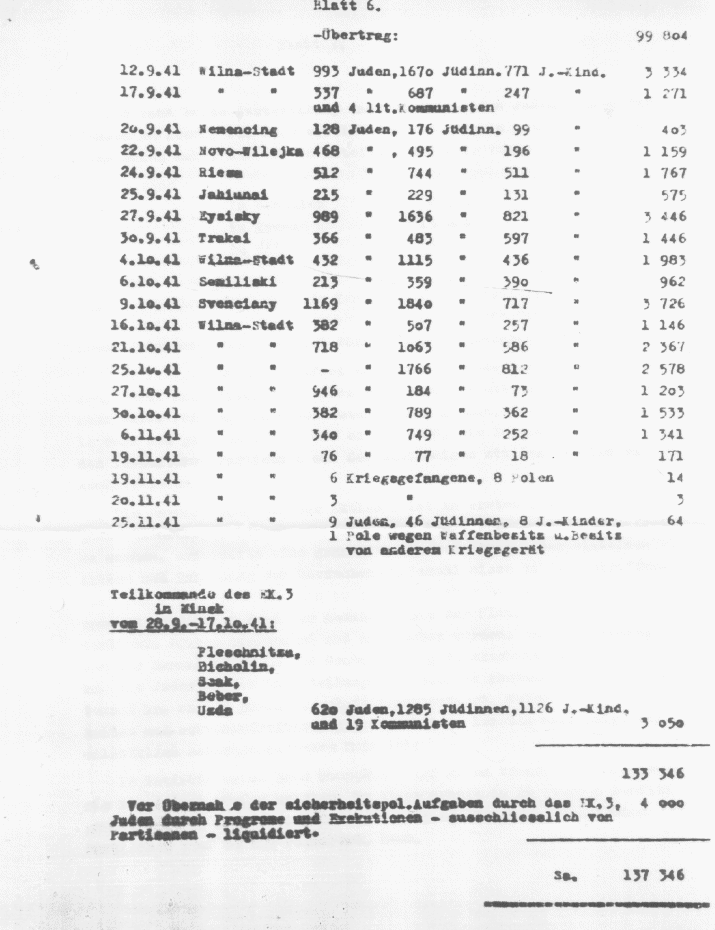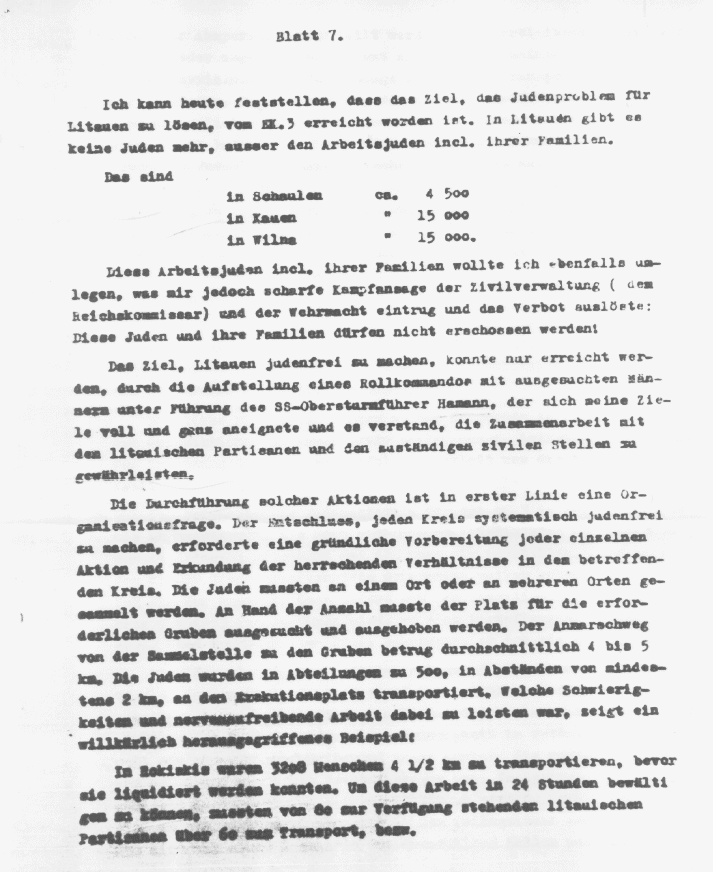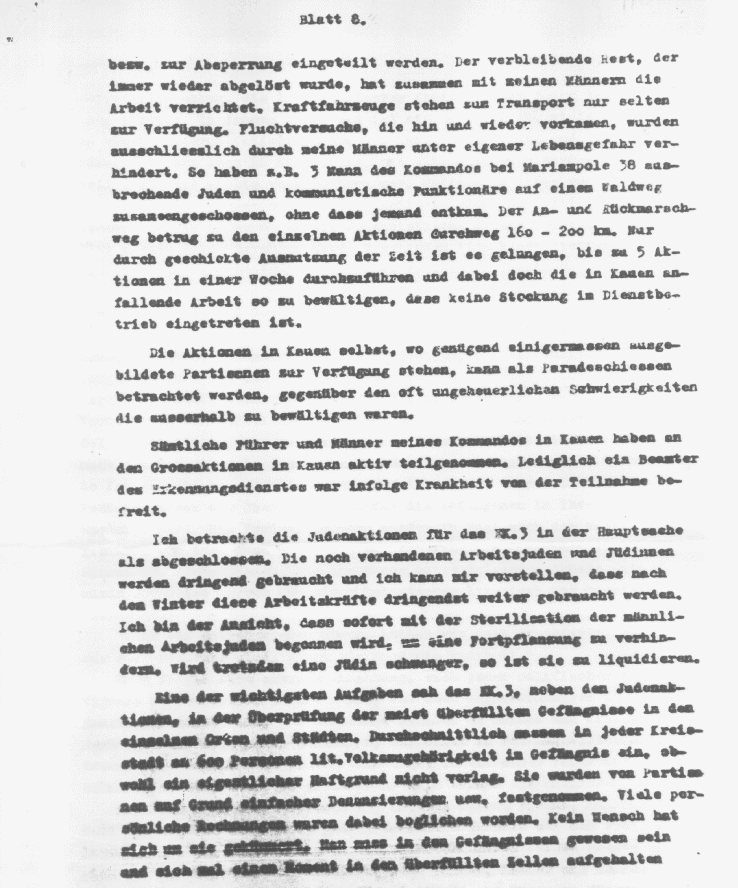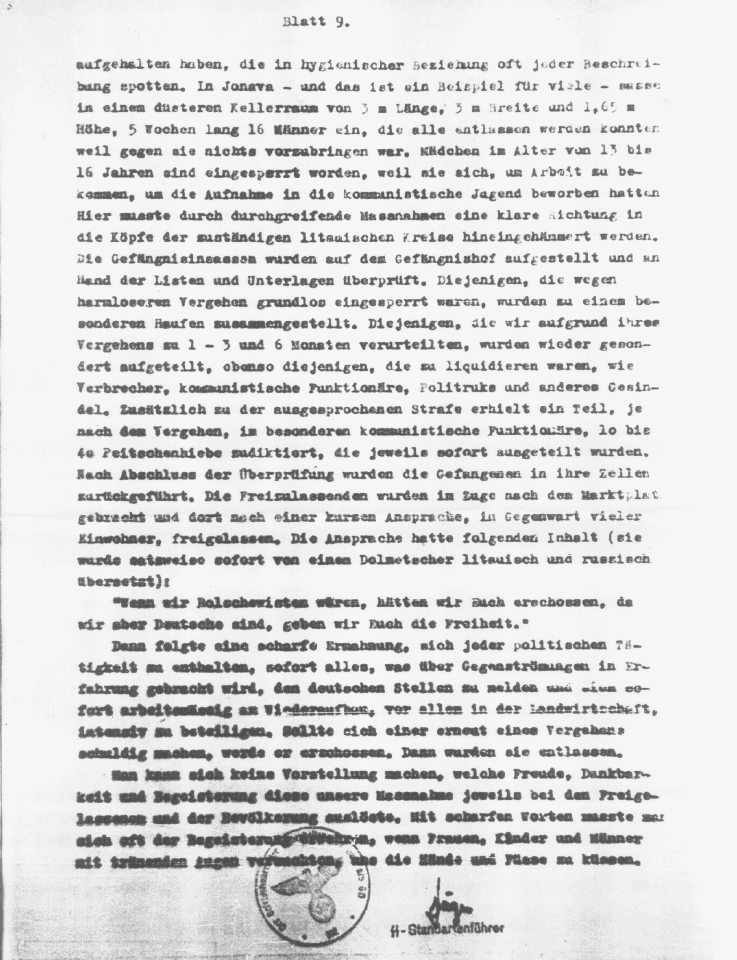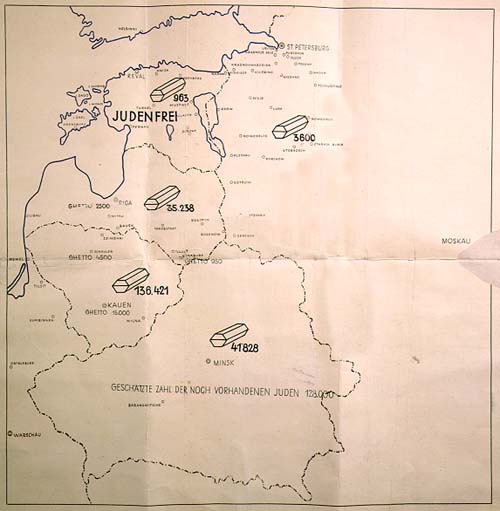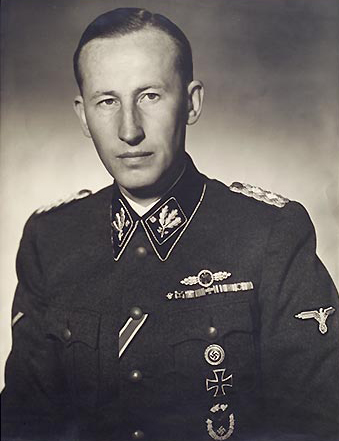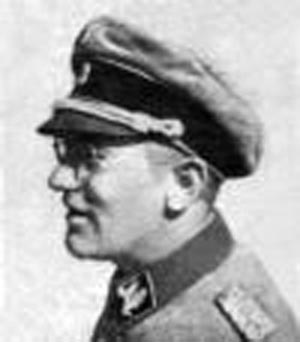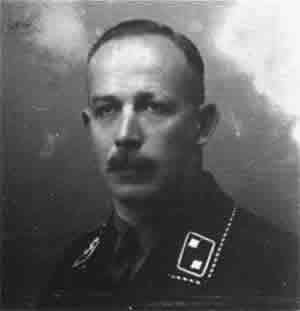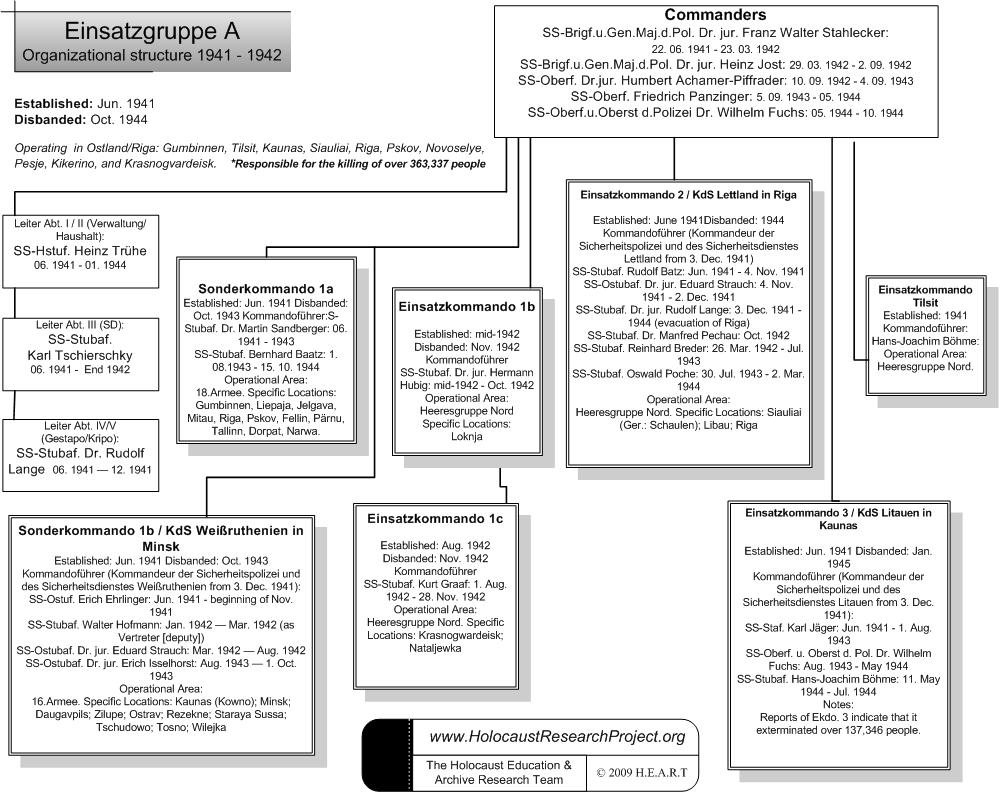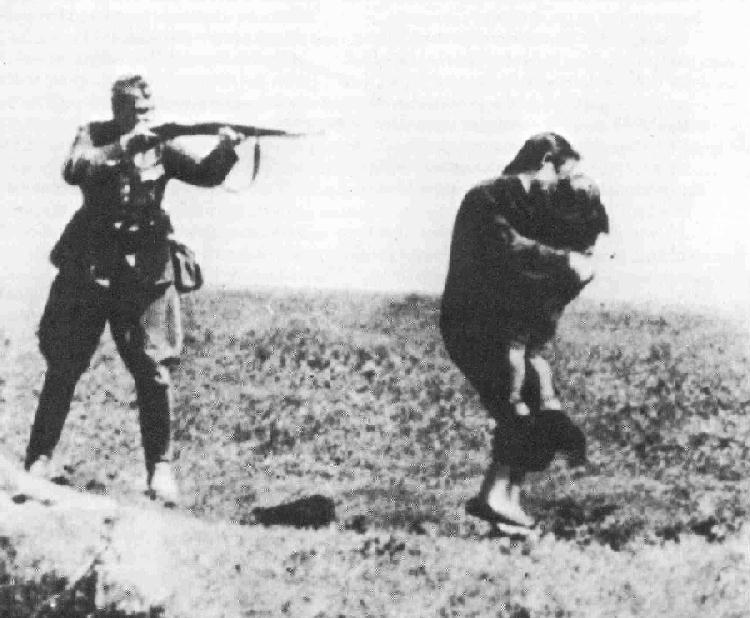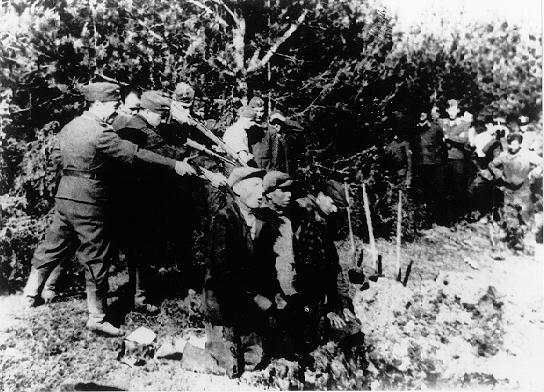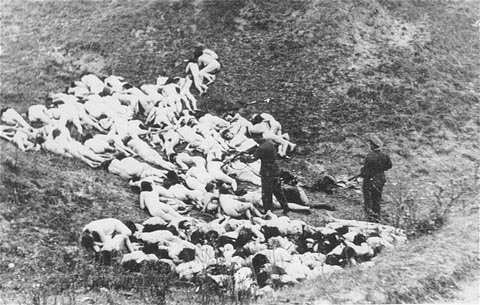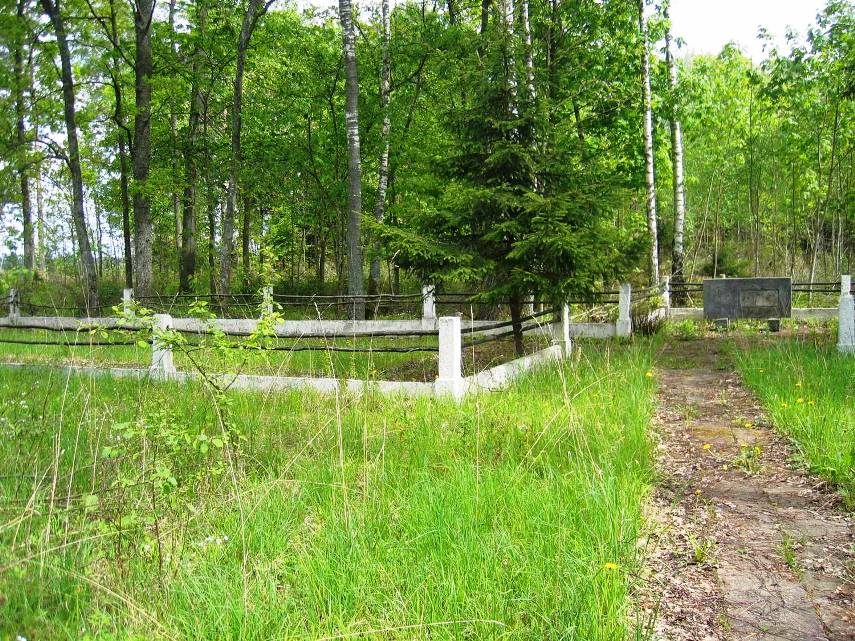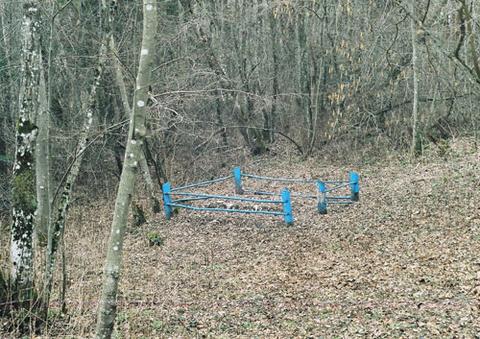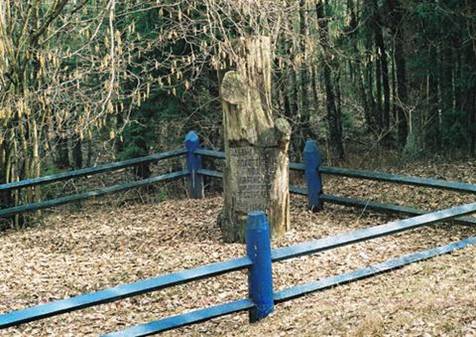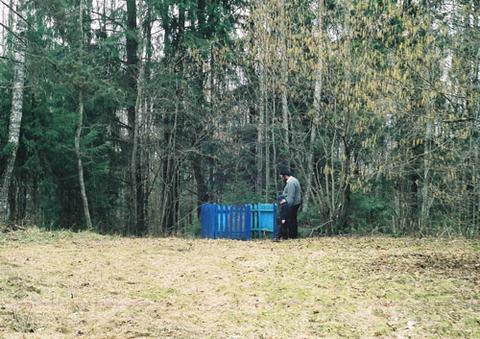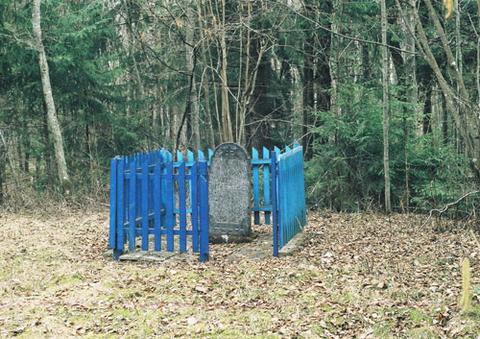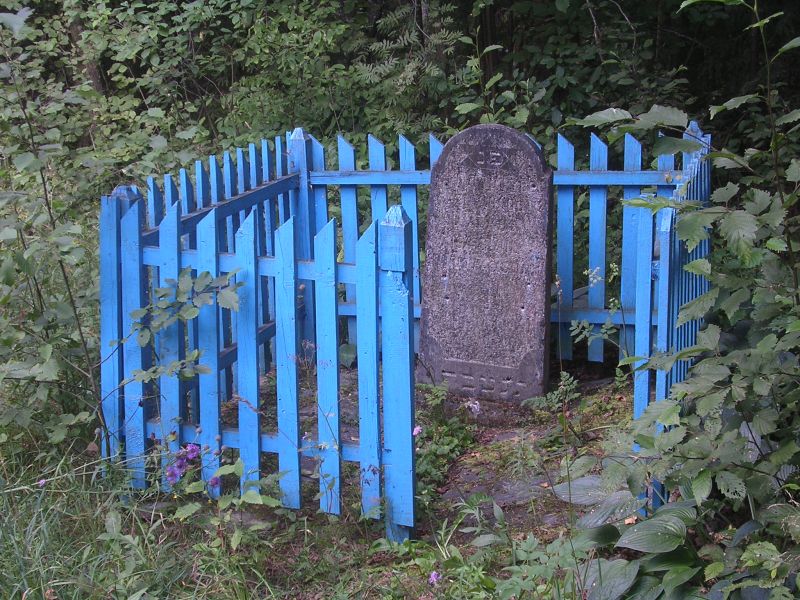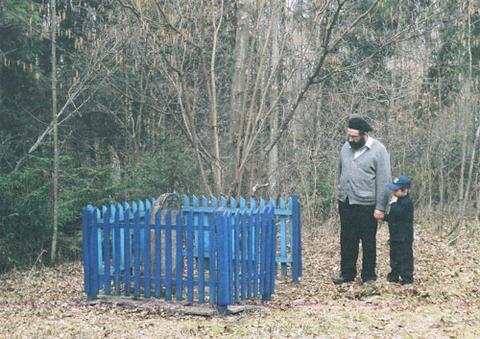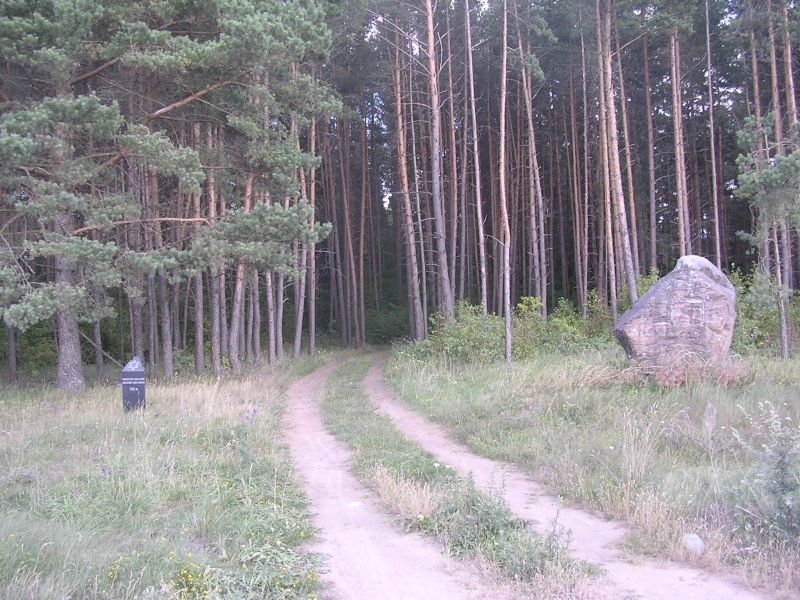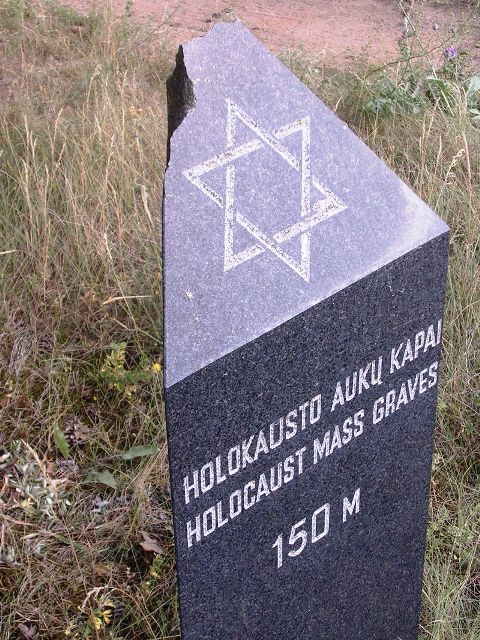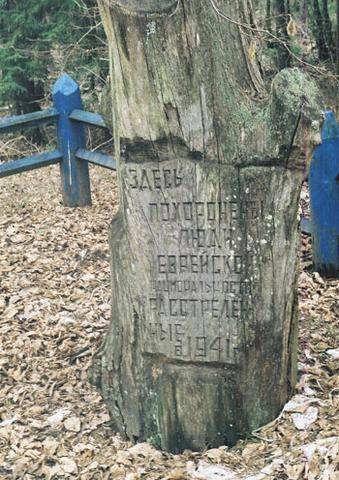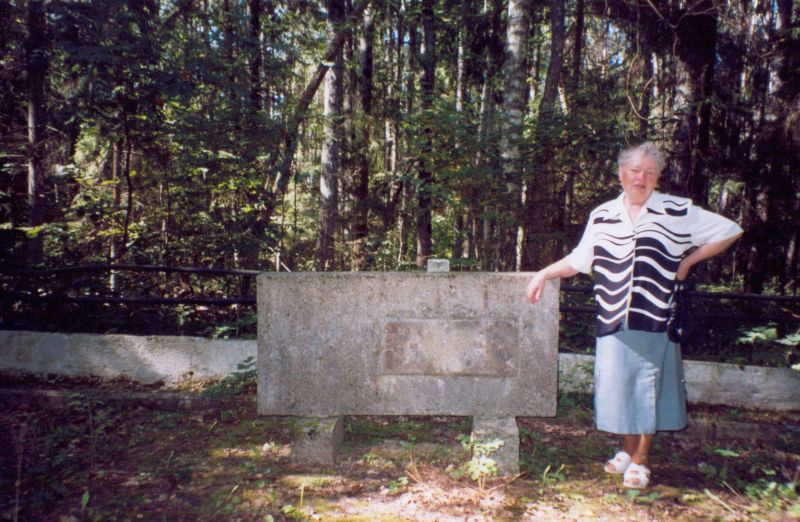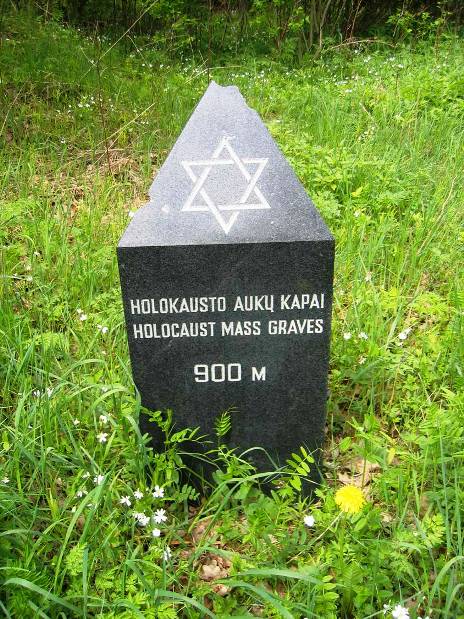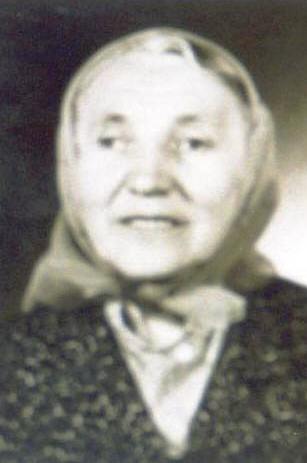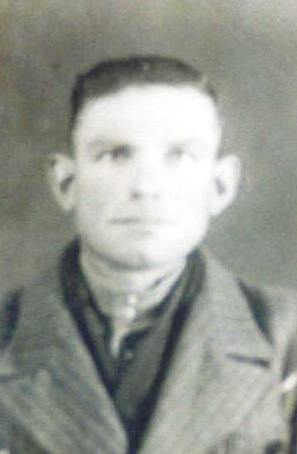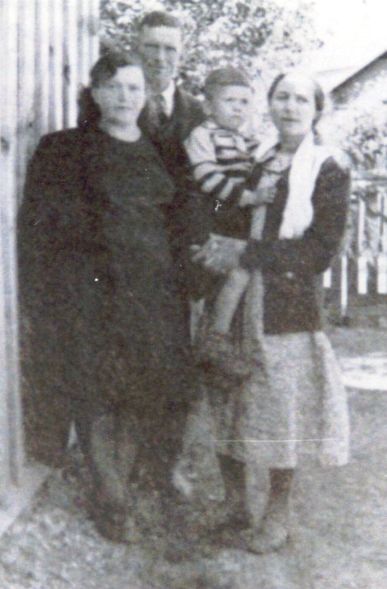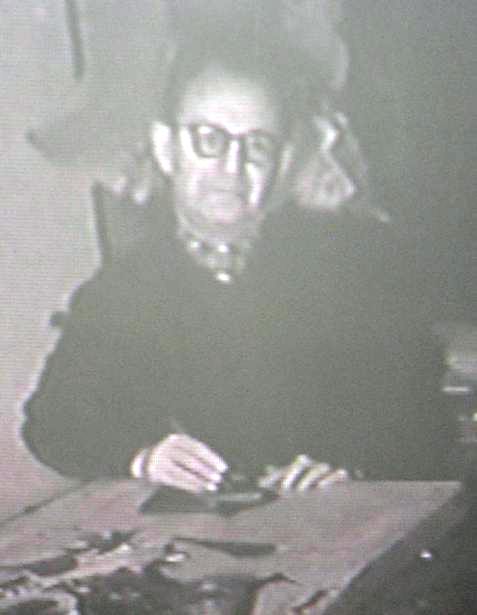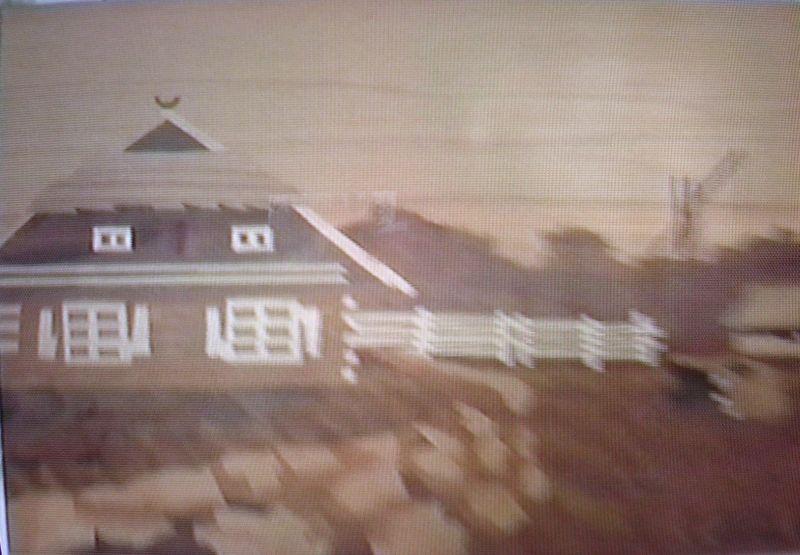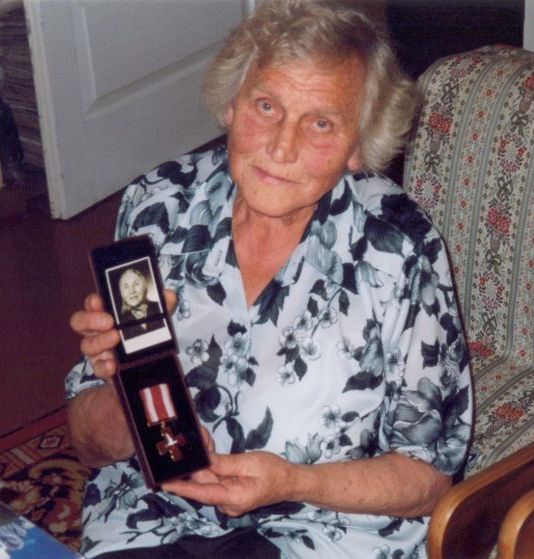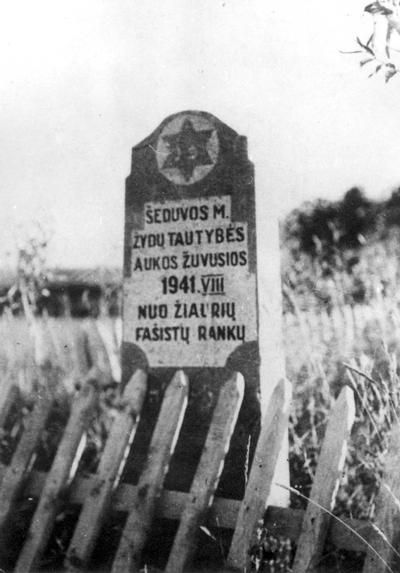The Holocaust in Shadova - Šeduva
The Shoah in Shadova - Šeduva



'Write down! Record!'
The Germans crossed the border in Lithuania on the 22nd June 1941, taking Shadova - Šeduva a few days later. Centuries of Jewish life in Shadova - Šeduva would end within two short months at the hands of satanic German-Nazi soldiers and their Lithuanian collaborators.
Shadova- Šeduva
Kauleliškiai
Liaudiškiai
Raudondvanis
The Last Path of the Jewish Community of Shadova - Šeduva to the Killing Sites at Kauleliškiai and Liaudiškiai
LITHUANIA
POLAND
BELARUS
LATVIA
RUSSIA
VILNA
Shadova
Kovno
Memel
Shavel
Ponovezh
The End of Lithuanian Independence and Soviet Occupation
Emigration and the results of WWI had reduced the Jewish population of Shadova - Šeduva in 1939 to only 200 families, or some 800 people, from a high of 2513 in 1890. The signing of the Molotov-Ribbentrop Pact in August 1939 and the German-Soviet Boundary and Friendship Treaty a month later placed Lithuania to the sphere of the Soviets. Vilna was quickly occupied by the Red Army and then transferred to Lithuanian control in exchange for stationing Soviet troops within Lithuania. By June 1940 the Soviets had demanded the formation of a pro-Soviet government and the entry of more troops as part of the Mutual Assistance Pact between the countries. President Antanas Smetona was forced to leave as 15 Red Army divisions crossed the border to occupy Lithuania.
Within a short space of time a pro-Soviet puppet government was established under Vladimir Dekanozov and Justas Paleckis, the Seimas was disbanded and show case elections selected Communist representatives who immediately chose to make Lithuania part of the Soviet Union. The occupation was complete and the process of Sovietisation began immediately. Land, banks and large businesses were nationalised. All religious, cultural, and political organizations, bar the Communist Party of Lithuania and its youth branch, were banned. From June 1940 some 17000 people perceived as enemies of communism were deported to Siberia, where many would perish. Lithuania Jews, who had played a significant role in the country's economy, were especially affected. Many were exiled. At the same time the Zionist parties and youth movements were made illegal and the community organisations and schools closed.
Emigration and the results of WWI had reduced the Jewish population of Shadova - Šeduva in 1939 to only 200 families, or some 800 people, from a high of 2513 in 1890. The signing of the Molotov-Ribbentrop Pact in August 1939 and the German-Soviet Boundary and Friendship Treaty a month later placed Lithuania to the sphere of the Soviets. Vilna was quickly occupied by the Red Army and then transferred to Lithuanian control in exchange for stationing Soviet troops within Lithuania. By June 1940 the Soviets had demanded the formation of a pro-Soviet government and the entry of more troops as part of the Mutual Assistance Pact between the countries. President Antanas Smetona was forced to leave as 15 Red Army divisions crossed the border to occupy Lithuania.
Within a short space of time a pro-Soviet puppet government was established under Vladimir Dekanozov and Justas Paleckis, the Seimas was disbanded and show case elections selected Communist representatives who immediately chose to make Lithuania part of the Soviet Union. The occupation was complete and the process of Sovietisation began immediately. Land, banks and large businesses were nationalised. All religious, cultural, and political organizations, bar the Communist Party of Lithuania and its youth branch, were banned. From June 1940 some 17000 people perceived as enemies of communism were deported to Siberia, where many would perish. Lithuania Jews, who had played a significant role in the country's economy, were especially affected. Many were exiled. At the same time the Zionist parties and youth movements were made illegal and the community organisations and schools closed.
Anatanas Smetona
Vladimir Dekanozov
Justas Paleckis
Map of pre-1939 Jewish Lithuania
Molotov-Ribbentrop Pact - Secret Annex
Lithuanian Troops Enter Vilna - 1939
Arms of Lithuanian SSR
Additions to Lithuanian Territory - 1939-1940
1940 Soviet Map of Lithuanian SSR
Arrival at a Camp in the Gulag
The Great Patriotic War - Operation Barbarossa and the Occupation of Lithuania
On the 22nd June 1941 the territory of the Lithuanian SSR was invaded by Nazi Germany. Operation Barbarossa commenced with the advance of the the 16th Army and the 4th Panzer Army of the Wehrmacht's Army Group North under Generalfeldmarschall Wilhelm Ritter von Leeb, who entered western and northern Lithuania, attacking the North-Western Front of the Red army commanded by General Colonel Fyodor Kuznetsov. Using the new tactic of Blitzkrieg the Wehrmacht advanced rapidly encountering only sporadic resistance from the Red Army and assistance from the Lithuanians. Simultaneously, to the south Generalfeldmarschall Fedor von Bock of Army Group Centre advanced against the Western Front of General Dmitry Pavlov towards Vilna and the surrounding area.
On the 22nd June 1941 the territory of the Lithuanian SSR was invaded by Nazi Germany. Operation Barbarossa commenced with the advance of the the 16th Army and the 4th Panzer Army of the Wehrmacht's Army Group North under Generalfeldmarschall Wilhelm Ritter von Leeb, who entered western and northern Lithuania, attacking the North-Western Front of the Red army commanded by General Colonel Fyodor Kuznetsov. Using the new tactic of Blitzkrieg the Wehrmacht advanced rapidly encountering only sporadic resistance from the Red Army and assistance from the Lithuanians. Simultaneously, to the south Generalfeldmarschall Fedor von Bock of Army Group Centre advanced against the Western Front of General Dmitry Pavlov towards Vilna and the surrounding area.
Ritter von Leeb
Kuznetzov
Operation Barbarossa - The Nazi Invasion of the Soviet Union - June 22nd 1941
Much of the local Lithuanian population considered the Nazis to be liberators and hoped that they would allowed to re-establishment an independent state. Indeed, as the Red Army fled eastwards, nationalist Lithuanians took up the arms and took control of strategic installations to protect them from Soviet sabotage. On June 24, the Wehrmacht entered Kovno (Kaunas) and Vilna (Vilnius) without a fight as they were already controlled by rebels of the Lithuanian Activist Front (LAF) and former soldiers of independent Lithuanian Army, who deserted from the Red Army to proclaim independence. During the following days the Germans consolidated their military control and allowed the anti-Soviet and antisemitic Provisional Government in Kaunas to pass a series of laws and decrees aimed at reversing Sovietisation. The Government organised volunteer forces, known as the Tautinio Darbo Apsaugos Batalionas (TDA), to serve as basis for the new Lithuanian Army. These units would soon play a significant role in the apparatus of genocide.
By the end of July 1941 the Germans formed their own civil administration - the Reichskommissariat Ostland, divided into four Generalbezirk. Adrian von Renteln became the commander of Generalbezirk Litauen and took over all government functions,
By the end of July 1941 the Germans formed their own civil administration - the Reichskommissariat Ostland, divided into four Generalbezirk. Adrian von Renteln became the commander of Generalbezirk Litauen and took over all government functions,
Bock
Pavlov
Renteln
dismissing the self-proclaimed Lithuanian government. Policy decisions would be made by high-ranking German officers and implemented by Lithuanian civil servants and security staff.
Anti-Semitism and the First Murders
Lithuania anti-Semitism was rife and was further encouraged through the fallacious assertion that the Jews had both instigated and supported the Soviet occupation in 1940. Even before the 'official' policy of slaughter had commenced the Provisional Government and rogue insurgents headed by Algirdas Klimaitis had committed a series of bloody pogroms. In addition with the infamous events that occurred at the Lietukis Garage in Kovno between 25 -26th June 1941, when dozens of Jews were bludgeoned to death in front of a gleeful crowd, a few thousand Jews were killed by Lithuanians during the first few days of the Nazi occupation.
The holocaust in Lithuania can be divided into three major stages, the initial massacres of 175000 Jews, especially of all the smaller rural communities until the end of 1941; the exploitation of the surviving 45000 Jews for forced labour to support the Nazi war economy through 1942 till March 1943, and finally their murder, a process finalised in mid July 1944. The Jewish community of Shadova - Šeduva, upon whom we will concentrate, was liquidated in the first phase of this process..
Lithuania anti-Semitism was rife and was further encouraged through the fallacious assertion that the Jews had both instigated and supported the Soviet occupation in 1940. Even before the 'official' policy of slaughter had commenced the Provisional Government and rogue insurgents headed by Algirdas Klimaitis had committed a series of bloody pogroms. In addition with the infamous events that occurred at the Lietukis Garage in Kovno between 25 -26th June 1941, when dozens of Jews were bludgeoned to death in front of a gleeful crowd, a few thousand Jews were killed by Lithuanians during the first few days of the Nazi occupation.
The holocaust in Lithuania can be divided into three major stages, the initial massacres of 175000 Jews, especially of all the smaller rural communities until the end of 1941; the exploitation of the surviving 45000 Jews for forced labour to support the Nazi war economy through 1942 till March 1943, and finally their murder, a process finalised in mid July 1944. The Jewish community of Shadova - Šeduva, upon whom we will concentrate, was liquidated in the first phase of this process..
Lietukis Garage Pogrom - Kovno 25 to 26th June 1941
Lithuanian Collaborators Volunteer to Arrest Jews for Nazis
Anti-Semitic Posters
Organising Genocide - The Einsatzgruppen
On the heals of the invading Wehrmacht came mobile killing squads known as Einsatzgruppen. The Einsatzgruppen ('task forces' or 'intervention groups') were paramilitary groups operated by the SS whose principle task, as stated by SS General Erich von dem Bach at the Nuremburg Trials: "was the annihilation of the Jews, Gypsies and Soviet political commissars".
Reinhard Heydrich, chief of the Reichssicherheitshauptamt (Reich Security Head Office - RSHA), allocated four Einsatzgruppen for Operation Barbarossa in 1941, with the initial task of liquidating Soviet and Communist officials and to instigate pogroms against local Jewish populations. Soon the mandate was widened to include the mass murder of entire Jewish communities.
Einsatzgruppe A, assigned the area of the Baltic States, was commanded by SS - Brigadeführer Franz Walter Stahlecker. The parent formation was sub-divided in Sondercommando and Einsatzcommando groupings. On the 25th June 1941 Stahlecker arrived in Kovno to organise the 'treatment' of the Jews of Lithuania. He would utilise local Lithuanian auxiliaries for the physical organisation, preparation and execution of his orders, exploiting three local organisations for the annihilation of Lithuania's Jews. These were the Tautinio Darbo Apsaugos in Kovno; the Lithuanian Security Police (Lietuvos saugumo policija) and the Lithuanian Sonderkommando Squad (Ypatingasis būrys) around Vilna. Operating on the area of Kovno and in the country districts of Lithuania during the period of the killings in Shadova - Šeduva was Einsatzkommando 3 commanded by SS - Standartenführer Karl Jäger. Einsatzcommando 3 was responsible for the slaughter of much of Lithuanian Jewry, a process detailed in the report issued by Jäger to Stahlecker on the 1st December 1941.
On the heals of the invading Wehrmacht came mobile killing squads known as Einsatzgruppen. The Einsatzgruppen ('task forces' or 'intervention groups') were paramilitary groups operated by the SS whose principle task, as stated by SS General Erich von dem Bach at the Nuremburg Trials: "was the annihilation of the Jews, Gypsies and Soviet political commissars".
Reinhard Heydrich, chief of the Reichssicherheitshauptamt (Reich Security Head Office - RSHA), allocated four Einsatzgruppen for Operation Barbarossa in 1941, with the initial task of liquidating Soviet and Communist officials and to instigate pogroms against local Jewish populations. Soon the mandate was widened to include the mass murder of entire Jewish communities.
Einsatzgruppe A, assigned the area of the Baltic States, was commanded by SS - Brigadeführer Franz Walter Stahlecker. The parent formation was sub-divided in Sondercommando and Einsatzcommando groupings. On the 25th June 1941 Stahlecker arrived in Kovno to organise the 'treatment' of the Jews of Lithuania. He would utilise local Lithuanian auxiliaries for the physical organisation, preparation and execution of his orders, exploiting three local organisations for the annihilation of Lithuania's Jews. These were the Tautinio Darbo Apsaugos in Kovno; the Lithuanian Security Police (Lietuvos saugumo policija) and the Lithuanian Sonderkommando Squad (Ypatingasis būrys) around Vilna. Operating on the area of Kovno and in the country districts of Lithuania during the period of the killings in Shadova - Šeduva was Einsatzkommando 3 commanded by SS - Standartenführer Karl Jäger. Einsatzcommando 3 was responsible for the slaughter of much of Lithuanian Jewry, a process detailed in the report issued by Jäger to Stahlecker on the 1st December 1941.
The Jäger Report
Click to see images of the infamous Jäger Report detailing the murder of Lithuania's and part of Latvia's Jews. The Aktzia in Shadova - Šeduva, and the murder of the Jewish community are detailed on page 3 of the report
Click to see images of the infamous Jäger Report detailing the murder of Lithuania's and part of Latvia's Jews. The Aktzia in Shadova - Šeduva, and the murder of the Jewish community are detailed on page 3 of the report
"Jewish Executions Carried Out by Einsatzgruppe A"
This map was an appendix to the 1941 Stahlecker Report. Marked "Secret Reich Matter", the map shows the number of Jews shot in the Baltic states, and notes at the bottom: "the estimated number of Jews still on hand is 128,000".
This map was an appendix to the 1941 Stahlecker Report. Marked "Secret Reich Matter", the map shows the number of Jews shot in the Baltic states, and notes at the bottom: "the estimated number of Jews still on hand is 128,000".
Heydrich
Chief of RSHA
Chief of RSHA
Stahlecker
Einsatzgruppe A
Einsatzgruppe A
Jäger
Einsatzkommando 3
Einsatzkommando 3
Commanders of Genocide in Shadova - Šeduva
The report is a tally sheet of actions by Einsatzkommando 3, including the subordinate Rollkommando Hamann, proudly itemising, day by day, town by town and execution by execution, the liquidation of 137346 people, the vast majority Jews, between 2nd July 1941 to the 25th November 25 1941. Concluding the document Jäger boasts that, "...I can confirm today that Einsatzkommando 3 has achieved the goal of solving the Jewish problem in Lithuania. There are no more Jews in Lithuania, apart from working Jews and their families." The total included a breakdown into categories of Jews, communists and criminals, in over 100 separate executions at 71 different locations. The report specifically merits SS - Obersturmführer Joachim Hamann for carrying out the bulk of the work. His mobile unit (Rollkommando Hamann) employed no more than a dozen German troops and several dozen Lithuanians from the 3rd company of the Tautinio Darbo Apsaugos Batalionas (TDA), commanded by Lieutenant Bronius Norkus and Colonel Vytautas Reivytis. Between July 13 to August 22, 1941, the commando operated out of Dvinsk (Daugavpils) in Latvia, traversing the countryside slaughtering tens of thousands of Jews. The scenario of the mass executions was 'simple'. Hamann with as little as two to ten Einsatzkommando troops would arrive in cars together with a truck loaded with a somewhat larger number of Lithuanians just prior to the shooting. Wherever they went, Hamann were assisted by members of the local police and Lithuanian collaborators who were responsible for preparations such as digging the pits and rounding up and guarding the Jews in a secluded area, usually a forest or a distant field. During larger actions local men were co-opted to bolster the ranks of the shooters. Jews selected for executions were marched to pits dug in advance, usually 4-5 kilometres away from where they lived and shot. After the corpses were tossed into the pits the loot, including the clothes and other property of those killed, would be divided among the perpetrators. After the massacre Hamman would depart for the next location, leaving once thriving Shtetls devoid of their Jewish community.
Movie of Einsatzgruppen Crimes
Structure of Einsatzgruppe A
Einsatzgruppen Crimes
The Shoah in Shadova - Šeduva
As Operation Barberossa commenced some of Shadova's Jews attempted to flee east to Russia. After many were robbed of their valubles by Lithuanian nationalists most returned to their homes. The German forces captured Shadova - Šeduva on 25th June 1941 and were joyfully received with flowers by the local Lithuanians. Even before the entry of the Germans the Lithuanian facist activists headed by the teacher Gorionos had already begun to terrorize the Jews. By the beginning of July they had forced the Jews to wear the yellow Star of David on an armband. Jews who had participated in the short Soviet administration were immediately arrested and executed. Then Jews who had been taken to dismantle the remnants of the munitions factory in Linkaičiai on the road to Radviliškis that had been blown up by the retreating Red Army were accused of stealing grenades and summarily executed.
The Jews of Shadova - Šeduva were then forced to form labour gangs. They were set to work cleaning the streets and at the warehouses of the rail station, that still contained Soviet food, building supplies and munitions. All the work was guarded and supervised by armed Lithuanian militia who abused and maltreated the Jews. In July 1941 an order was issued ordering the Jews to mark their homes with a notice stating the owner of the house. The Jews of Shadova - Šeduva were then expelling from their own homes and were ordered to gather in the market place with no more than a small package each, and to hand over the keys to their houses to the local police. Under heavy guard the Jews were escorted at night to the village of Pavartyčiai, five kilometres north-west of Shadova - Šeduva, where they were crowded into two unfinished Soviet barracks. There were no basic services and the buildings were surrounded with a low barbed wire fence. Guards were positioned outside the wire. Twenty-five Jewish youths who had been sent to work on local farms were brought to the prison camp. They had been beaten and their injuries were treated by Dr. Patorski. The Jews were ordered to hand over all their valuables and cash.
The Sad End of the Jewish Community of Shadova - Šeduva
On the 3rd August 1941 ten Jews were taken by the Lithuanian guards on the pretence of being put to work on the road to Radviliškis. They were shot beside some lime pits and the murderers covered the bodies with lime. In mid-August the Lithuanian murderers took another 27 victims, among them Rabbi Mordechai David Henkin, to the village of Kauleliškiai and executed them with rifle fire. Then 35 Jews who at the beginning were forced to do farm work were murdered at the Raudondvaris estate a few kilometers east from Shadova - Šeduva and buried in the fields, which were afterwards ploughed with a tractor. All these killings had been initiated and executed by local Lithuanian nationalist collaborators.
On 25th August 1941 the remaining Jews of Shadova - Šeduva were loaded on trucks and taken to Liaudiškiai, ten kilometres south-west of the town where the Rollcommando Hamann of Einsatzcommando 3 and Lithuanian colaborators of the 3rd company of the Tautinio Darbo Apsaugos Batalionas were waiting for them. Over the coming two days the entire Jewish community of Shadova was shot and buried in two pre-prepared mass graves that would hol the bodies of 664 men, women and children. One site was located 400 meters north of the Shadova - Šeduva road and a second 900 meters north west of the same road, close to a path in the forest. The names of those murdered are commemorated at Yad Vashem and here on the Yizkor page of this site. The names of the infamous murderers involved in the massacre should also be remembered. The local killers of their Jewish neighbours from Shadova - Šeduva were Ramnauskes, Valavičius, Jonas Tomkus and Klemensas Rožėnas. The Jäger report concludes that Einsatzcommando 3 registered the murder in Šeduva on the 25th and 26th August 1941 of 230 Jews, 275 Jewesses and 159 Jewish children, a total of 664 people.
On the 3rd August 1941 ten Jews were taken by the Lithuanian guards on the pretence of being put to work on the road to Radviliškis. They were shot beside some lime pits and the murderers covered the bodies with lime. In mid-August the Lithuanian murderers took another 27 victims, among them Rabbi Mordechai David Henkin, to the village of Kauleliškiai and executed them with rifle fire. Then 35 Jews who at the beginning were forced to do farm work were murdered at the Raudondvaris estate a few kilometers east from Shadova - Šeduva and buried in the fields, which were afterwards ploughed with a tractor. All these killings had been initiated and executed by local Lithuanian nationalist collaborators.
On 25th August 1941 the remaining Jews of Shadova - Šeduva were loaded on trucks and taken to Liaudiškiai, ten kilometres south-west of the town where the Rollcommando Hamann of Einsatzcommando 3 and Lithuanian colaborators of the 3rd company of the Tautinio Darbo Apsaugos Batalionas were waiting for them. Over the coming two days the entire Jewish community of Shadova was shot and buried in two pre-prepared mass graves that would hol the bodies of 664 men, women and children. One site was located 400 meters north of the Shadova - Šeduva road and a second 900 meters north west of the same road, close to a path in the forest. The names of those murdered are commemorated at Yad Vashem and here on the Yizkor page of this site. The names of the infamous murderers involved in the massacre should also be remembered. The local killers of their Jewish neighbours from Shadova - Šeduva were Ramnauskes, Valavičius, Jonas Tomkus and Klemensas Rožėnas. The Jäger report concludes that Einsatzcommando 3 registered the murder in Šeduva on the 25th and 26th August 1941 of 230 Jews, 275 Jewesses and 159 Jewish children, a total of 664 people.
Path to the Death Pits at Kauleliškiai
The Death Pits of the Jews of Shadova at Kauleliškiai
The Death Pits of the Jews of Shadova at Liaudiškiai
The Memorial Plaque has been Stolen
The Memorial Plaque has been Stolen

No Shame! - The Jäger Report Itemises the Murder of the Jewish Community of Shadova
A Shadova Survivors Tale
Three families, including that of the town's doctor, Dr. Patorski, and the Cooper and Noll families who had participated in the Lithuanian War of Independence in 1920, were kept alive for fifty-four weeks after the Nazi invasion before being murdered. The sole survivor of the massacre was Shulamith Noll, known as Sanute Noliene by the Lithuanians. She was not hit by the gunfire of the murderers and fell between the bodies of the victims. The Lithuanian and Nazi-German gunmen had decided to take a break to get drunk during the shooting and did not cover the bodies in the pit after they had finished their 'work'. Shulamith Noll, dressed only in undergarments, climbed out of the pit during the night and made her way to the church where she met the local priest, Nikolas Karosas, and told him about the murders. He gave her some clothes and convinced her to be baptised to Christianity.
After her baptism, Shulamith Noll was taken by the priest on his horse to the house of the Paluckas family in the tiny hamlet of Snikoniui near Shadova - Šeduva. The priest asked Stanislav and Liudvika Paluckas to hide Shulamith. They agreed, even though the Germans had issued warnings that whoever hid a Jew would be executed together with his whole family. Later Shulamith was joined by Gershon Kirpitznik, the cobbler, who had
Three families, including that of the town's doctor, Dr. Patorski, and the Cooper and Noll families who had participated in the Lithuanian War of Independence in 1920, were kept alive for fifty-four weeks after the Nazi invasion before being murdered. The sole survivor of the massacre was Shulamith Noll, known as Sanute Noliene by the Lithuanians. She was not hit by the gunfire of the murderers and fell between the bodies of the victims. The Lithuanian and Nazi-German gunmen had decided to take a break to get drunk during the shooting and did not cover the bodies in the pit after they had finished their 'work'. Shulamith Noll, dressed only in undergarments, climbed out of the pit during the night and made her way to the church where she met the local priest, Nikolas Karosas, and told him about the murders. He gave her some clothes and convinced her to be baptised to Christianity.
After her baptism, Shulamith Noll was taken by the priest on his horse to the house of the Paluckas family in the tiny hamlet of Snikoniui near Shadova - Šeduva. The priest asked Stanislav and Liudvika Paluckas to hide Shulamith. They agreed, even though the Germans had issued warnings that whoever hid a Jew would be executed together with his whole family. Later Shulamith was joined by Gershon Kirpitznik, the cobbler, who had
The Paluckas House in Snikoniui
Liudvika and Stanislav Paluckas
Shulamith & Pinchas Noll with the Paluckas'
The Shoemaker - Gershon Kirpitznik
The Baptism Certificate for Petras Paluckas (Pinchas Noll) issued in Šeduva on 19th January 1943
Righteous among the Nations
Valerija Orantiene shows the medal her mother, Liudvika Paluckas, received as an expression of gratitude for saving Shulamith and Pinchas Nollvika Paluckas from the hands of the Nazi murderers.
Valerija Orantiene shows the medal her mother, Liudvika Paluckas, received as an expression of gratitude for saving Shulamith and Pinchas Nollvika Paluckas from the hands of the Nazi murderers.
been taken by the Germans to work in a shoe factory in the Shavel - Siauliai ghetto. He managed to escape and reurned to Shadova - Šeduva. He too sort refuge which was also guaranteed to him after he agreed to be baptised.
The Palukas familiy hid them in a special hiding place in the dairy. During the day time Shulamith cooked dinner for the family, and did some cleaning, while during the night she returned to her hide. During her period of hiding Shulamith 'became' pregnant and in May 1943 she gave birth to a son who was baptised by the priest Antanaitis and given the name Petras Paluckas. Liudvika Paluckas pretended to be the mother of the child receivied presents from family and neighbours as though the child was her own.
After the war Shulamit and Petras, now renamed Pinchas, moved to Israel to start a new life.
After the war memorial stones were erected at the site of the murders of the Jews of Shadova - Šeduva on the initiative of Issac Balkar and a number of other survivors.
No Jewish community reorganised itself in Shadova - Šeduva after World War Two. Five centuries of Jewish life in the town had reached its tragic end. For the family names of those lost in the Shoah in Shadova - Šeduva click here.
The Palukas familiy hid them in a special hiding place in the dairy. During the day time Shulamith cooked dinner for the family, and did some cleaning, while during the night she returned to her hide. During her period of hiding Shulamith 'became' pregnant and in May 1943 she gave birth to a son who was baptised by the priest Antanaitis and given the name Petras Paluckas. Liudvika Paluckas pretended to be the mother of the child receivied presents from family and neighbours as though the child was her own.
After the war Shulamit and Petras, now renamed Pinchas, moved to Israel to start a new life.
After the war memorial stones were erected at the site of the murders of the Jews of Shadova - Šeduva on the initiative of Issac Balkar and a number of other survivors.
No Jewish community reorganised itself in Shadova - Šeduva after World War Two. Five centuries of Jewish life in the town had reached its tragic end. For the family names of those lost in the Shoah in Shadova - Šeduva click here.
Justice?
There is no justice system that can cope with murder on this scale. The results of the Holocaust are beyond retribution and they resulted in the physical annihilation of a third of the Jewish nation and of the destruction of historic centres of learning, Yiddish culture and language.
Still, it is worth noting briefly the ineffectual system of justice applied to the brutes of the Einsatzgruppen and to the Lithuanian collaborators. Mass murder was often punished with amazing leniency - if at all.
1) Heydrich was assassinated by Czech resistance in Prague on May 27th 1942.
2) Stahlecker died in 1942 from wounds sustained in battle with Soviet partisans near Krasnogvardeysk, Russia.
3) Jäger assumed a false identity and worked as an agriculturalist. He was only exposed when his report came to light in March 1959. He committed suicide in prison awaiting trial in June 1959.
4) Joachim Hamman died in April 1945 in unclear circumstances.
5) Senior members of the Einsatzgruppen were tried at Nuremberg between 1947 to 1948. Of the 14 death sentences given, only four were carried out; the others were commuted to prison terms. By 1958, all these mass murderers had been released from prison. A series of cases tried in German courts against members of the Einsatzgrupen in Germany sentenced the convicts to short sentences ranging usually between three to seven years.
6) Very few of the more junior German-Nazi soldiers who belonged to the Einsatzgruppen were brought to account for their war crimes. After formal de-nazification most quietly lived out their lives, raised families and exploited the financial rewards they had looted from their victims.
6) No evidence for any proceedings against the local collaborators from Shadova - Šeduva has been forthcoming. There is no trail data for Ramnauskes, Valavičius, Jonas Tomkus and Klemensas Rožėnas. A long list of Lithuanian collaborationist assassins of Einsatzkommando 3 that operated together with Jäger and Hamman is available. A small number were tried, some only the past decade. Most continued their lives without any legal proceedings being conducted against them.
There is no justice system that can cope with murder on this scale. The results of the Holocaust are beyond retribution and they resulted in the physical annihilation of a third of the Jewish nation and of the destruction of historic centres of learning, Yiddish culture and language.
Still, it is worth noting briefly the ineffectual system of justice applied to the brutes of the Einsatzgruppen and to the Lithuanian collaborators. Mass murder was often punished with amazing leniency - if at all.
1) Heydrich was assassinated by Czech resistance in Prague on May 27th 1942.
2) Stahlecker died in 1942 from wounds sustained in battle with Soviet partisans near Krasnogvardeysk, Russia.
3) Jäger assumed a false identity and worked as an agriculturalist. He was only exposed when his report came to light in March 1959. He committed suicide in prison awaiting trial in June 1959.
4) Joachim Hamman died in April 1945 in unclear circumstances.
5) Senior members of the Einsatzgruppen were tried at Nuremberg between 1947 to 1948. Of the 14 death sentences given, only four were carried out; the others were commuted to prison terms. By 1958, all these mass murderers had been released from prison. A series of cases tried in German courts against members of the Einsatzgrupen in Germany sentenced the convicts to short sentences ranging usually between three to seven years.
6) Very few of the more junior German-Nazi soldiers who belonged to the Einsatzgruppen were brought to account for their war crimes. After formal de-nazification most quietly lived out their lives, raised families and exploited the financial rewards they had looted from their victims.
6) No evidence for any proceedings against the local collaborators from Shadova - Šeduva has been forthcoming. There is no trail data for Ramnauskes, Valavičius, Jonas Tomkus and Klemensas Rožėnas. A long list of Lithuanian collaborationist assassins of Einsatzkommando 3 that operated together with Jäger and Hamman is available. A small number were tried, some only the past decade. Most continued their lives without any legal proceedings being conducted against them.
From which we learn that It is possible to commit Genocide and get away with it!
Sources
This is not an article researched from primary sources. Please feel welcome to contact if you wish to correct or augment the information.
1) Levin Dov. 2006. Šeduva. In.Pinkas ha-kehilot. Lita (Encyclopaedia of Jewish Communities. Lithuania). Jerusalem. Pp.654-658.
2) Greenberg Masha. 1995. The Jews of Lithuania: A History of a Remarkable Community, 1316-1945. Jerusalem.
3) Jewish Life in Lithuania: Exhibition Catalogue. 2001. Vilnius.
4) Shtetlink site for Shadova - Šeduva by Dora Boom.
5) Witness accounts: Isaac Balkar, Jerusalem; Ephraim Cohen - questionnaire of the Central Council of Lithuanian Jews in Italy.
6) Website pages referenced are linked throughout the text.
7) Picture of Shoah memorial is courtesy of Nava Shulkin.
This is not an article researched from primary sources. Please feel welcome to contact if you wish to correct or augment the information.
1) Levin Dov. 2006. Šeduva. In.Pinkas ha-kehilot. Lita (Encyclopaedia of Jewish Communities. Lithuania). Jerusalem. Pp.654-658.
2) Greenberg Masha. 1995. The Jews of Lithuania: A History of a Remarkable Community, 1316-1945. Jerusalem.
3) Jewish Life in Lithuania: Exhibition Catalogue. 2001. Vilnius.
4) Shtetlink site for Shadova - Šeduva by Dora Boom.
5) Witness accounts: Isaac Balkar, Jerusalem; Ephraim Cohen - questionnaire of the Central Council of Lithuanian Jews in Italy.
6) Website pages referenced are linked throughout the text.
7) Picture of Shoah memorial is courtesy of Nava Shulkin.
Copyright © 2009 Jon Seligman. All Rights Reserved.
The Death Pits of the Jews of Shadova at Liaudiškiai
The inscription from a now lost memorial reads: 'Jewish victims of Šeduva who died in August 1941 at the cruel hands of the fascists.'
The inscription from a now lost memorial reads: 'Jewish victims of Šeduva who died in August 1941 at the cruel hands of the fascists.'

